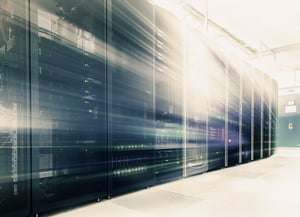 In the past, users were forced to choose between HDDs with high storage capacity or DRAMs offering high performance. Advancements in NAND flash allowed for a new, comprehensive option: the flash-based SSD. NAND flash is a nonvolatile (NV) semiconductor memory device. Unlike DRAMs, NAND chips do not need a continuous power supply to retain stored data. Flash-based SSDs provide greater storage capacity and better performance and speed at a cost-effective price point.
In the past, users were forced to choose between HDDs with high storage capacity or DRAMs offering high performance. Advancements in NAND flash allowed for a new, comprehensive option: the flash-based SSD. NAND flash is a nonvolatile (NV) semiconductor memory device. Unlike DRAMs, NAND chips do not need a continuous power supply to retain stored data. Flash-based SSDs provide greater storage capacity and better performance and speed at a cost-effective price point.
Benefits of Flash-based SSD
Flash-based SSDs are becoming an industry standard. They substantially outperform legacy solutions and better meet the needs of the modern data center. Flash-based SSDs boast speeds up to 100 times faster than that of HDDs, while using less power. They also offer a greater ROI than HDDs due to their lower cost of bandwidth and expected longevity.
NAND flash was the key element that allowed for the development of the SSD. However, it is no longer the only option. Intel has created a new NV chip called 3D XPoint to power their Optane SSD. Although it is similar to NAND flash, 3D XPoint offers faster data access and better endurance rates.
The Development of NVMe
SSD performance was further boosted by the development of Non-Volatile Memory Express (NVMe). Originally, SSDs used the same communication buses as HDDs. However, as SSDs became more efficient, these legacy solutions could no longer match the increased performance standards. NVMe was designed to meet the demands of SSD, allowing the technology to reach its full potential.
Flash-based SSD in the Modern Data Center
Increased adoption of flash-based SSDs allowed for the development of other innovative solutions that are reinventing the data center. Many data centers now use hybrid HDD/SSD arrays to optimize their storage systems. With a hybrid array, data can be sent to the best-suited storage unit, maximizing performance, and reducing storage costs. New units are easily added to the system as storage needs change. However, hybrid arrays do require constant maintenance to ensure that data is always in the most appropriate place.
Dual use of SSDs and HDDs also allows data centers to utilize data cache for HDD file systems. One copy of frequently accessed data is stored on a flash-based SSD, while another copy is sent to an HDD. The SSD provides high-availability for active data, and the HDD supports long-term storage at a lower price point.
Some data centers have migrated to all-flash storage systems, relying solely on SSDs. An all-flash system offers unmatched performance, but at a higher upfront cost. However, SSDs are becoming more and more affordable. All flash systems are expected to become more widely used as the price difference between SSD and HDD continues to diminish.
Notable Flash Storage Trends
The development of 3D NAND has generated even better performance from SSDs. The latest enterprise-level 3D NAND-powered SSDs provide over 11 TByte storage capacities and can outperform a combined 24 HDDs. They have an average life expectancy of 3 million device hours and use less than 6 watts of power.
Increased SSD usage calls for an updated NVMe that supports network-wide access. NVMe over Fabrics (NVMeoF) gives SSDs the ability to efficiently scale out across the network. NVMeoF helps optimize performance, reduce expenses, and simplify system design.
Intel's Optane system also addresses the need for a new type of memory. The Optane memory modules can be used to extend DRAM-based memory or as a fast cache and storage solution. Designed to complement and collaborate with Intel's 3D XPoint chips, the Optane integrated memory system provides improved access and communication times.
Although it is somewhat new, software-defined storage (SDS) is already being employed in data centers around the world. SDS abstracts the software layer from the underlying hardware layer. The result is a shared storage resource pool that is managed from a single interface. SDS platforms also offer integrated management tools to optimize data storage and maximize performance and efficiency.
The Future of Flash-based Storage
Flash-based SSDs are already outperforming their HDD predecessors and continue to improve. While they require a more expensive upfront investment, the total cost of ownership is less than that of HDDs. Advancements in 3D NAND chips will further boost flash-based SSD performance and efficiency. Increased flash-based SSD usage has generated new innovations such as NVMe, SDS, and Intel's Optane memory system. SSD adoption is expanding rapidly and will continue to do so as the need for high capacity, high performing storage solutions grows.
NEXT STEPS: Are you getting the most value from your storage investment? Find out in our white paper titled "Enterprise Storage Checkup".












